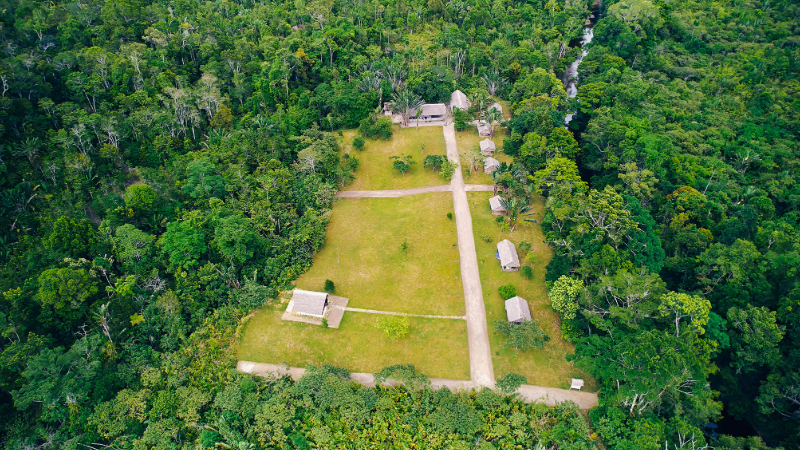Conservation value of field research stations is misunderstood, study reveals

Funding of field conservation research stations worldwide has been drastically reduced since the beginning of the Covid-19 pandemic, an international study including researchers from Oxford Brookes University has found.
More than 170 conservation researchers representing 157 field stations in 56 countries are represented in a new paper, ‘Field stations yield high return on investment for conservation’ published in the journal, Conservation Letters. These include five academics from Oxford Brookes University and 12 former students from the University’s MSc in Primate Conservation. The study consisted of a survey, which focused on field stations in mostly tropical and subtropical countries, to understand the impact of the pandemic on funding and evaluate the conservation benefits of the field stations. Findings include improved habitat quality of the surrounding areas by reducing deforestation, reducing rates of hunting, and improving enforcement of laws regarding wildlife use and resource extraction. Additionally, 93% of field stations hire local people supporting the local economy, in addition to generating significant scientific outputs that inform conservation policies.
The authors argue that field research stations have a high return on investment and are essential and highly effective tools for biodiversity conservation. Compared to surrounding areas, deforestation around field stations was 22% less in Africa, 13% less in South America and 12% less in Asia, showing an overall positive effect on the surrounding flora and fauna. Field conservation research stations are often in forests or remote areas and exist to provide a base for researchers. They are also found in areas where almost all forest has been lost and globally threatened primate species rely almost completely on the goodwill of local communities. Field stations are often at the centre of preserving these remnant populations. The field stations in this study were permanent structures occupied by a specific institution or research group. Almost all have at least one full-time staff member, with nearly half having between five and 75 staff. The authors demonstrated that field stations and their surrounding ecosystems are critical in the fight to preserve biodiversity, reduce habitat degradation, and preserve the habitats critical to halt climate change. Nearly half of the field stations included in the study were fully or partially closed due to Covid-19. Many field stations have seen a reduction in their core funding over the last few years. Almost a quarter remain closed.
Dr Timothy Eppley, lead author of the paper, Chief Conservation Officer of Wildlife Madagascar, a former Post Doctoral Research Fellow with San Diego Zoo Wildlife Alliance and an alumni of Oxford Brookes University, said: “A fundamental challenge is that governments and other funding agencies aren’t factoring in the true conservation return on investment and don’t realise the critical economic role of ecosystem services being protected by those field stations.”
Dr Eppley and co-authors, including Oxford Brookes University academics Dr Susan Cheyne, Professor Giuseppe Donati, Professor Anna Nekaris OBE, Professor Vincent Nijman and Dr Magdalena Svensson, suggest the work of field research stations is often interdisciplinary.
Prof Nekaris said: “Field stations can be hubs for education and outreach, providing essential science curriculum to students and training about ecosystem services that provide local people with improved economies.”
“While many of the field stations included in our study were situated in the tropics, over 10% of them were in the subtropics, said Prof Nijman. He added “The benefits of field stations are unlikely to be confined to the tropics and globally field stations are a clear benefit for biodiversity conservation.”
Prof Donati added: “Thousands of research stations around the world are true sentinels in the conservation of biodiversity. This work demonstrates how a stable presence in the field can guarantee concrete benefits in terms of conservation at a relatively low cost. We urge funders to invest in long-term field station programs."
Dr Russ Mittermeier, Chief Conservation Officer of Re:wild and senior author on the paper, said: “Field research stations are a cost-effective and multifaceted tool to addressing global conservation challenges and not just places where esoteric research is conducted, as is often the perception. Almost invariably, one finds higher densities of wildlife in the vicinity of these field stations than in other parts of a particular region, even within protected areas.” The authors advocate for greater recognition and investment in field research stations. Dr Mittermeier said: “The benefits of supporting these stations extend beyond preserving biodiversity to advancing scientific research, education, and local community development.”
Oxford Brookes University and conservation field stations:
Staff at Oxford Brookes University co-manage and contribute to research at international conservation field stations. These are run by the Borneo Nature Foundation and the Little Fireface Project in Java. They also work at field stations in collaboration with Asity Madagascar and Tropical Biodiversity and Social Enterprise in Madagascar. These sites provide research and conservation opportunities from Oxford Brookes’ award-winning MSc Primate Conservation and MRes Primatology and Conservation, and associated PhD programmes.
